Intro
Identify bruised or broken ribs symptoms, including chest pain, breathing difficulties, and tenderness. Learn about rib injury causes, diagnosis, and treatment options for fractured or bruised ribs.
The chest area is one of the most sensitive parts of the human body, and any injury to this region can be quite painful and debilitating. Bruised or broken ribs are common injuries that can occur due to various reasons, such as falls, car accidents, or sports injuries. It is essential to recognize the symptoms of bruised or broken ribs to seek medical attention promptly and prevent further complications.
Bruised or broken ribs can be caused by a direct blow to the chest, which can lead to pain, swelling, and difficulty breathing. In some cases, the injury may be minor, and the person may be able to manage the symptoms at home. However, if the injury is severe, it can lead to more serious complications, such as pneumonia, lung collapse, or even death. Therefore, it is crucial to seek medical attention if you suspect that you or someone else has bruised or broken ribs.
The symptoms of bruised or broken ribs can vary depending on the severity of the injury. Some common symptoms include severe chest pain, difficulty breathing, coughing up blood, and swelling or bruising in the chest area. In severe cases, the person may experience shortness of breath, rapid heartbeat, or low blood pressure. If you are experiencing any of these symptoms, it is essential to seek medical attention immediately.
Bruised Ribs Symptoms
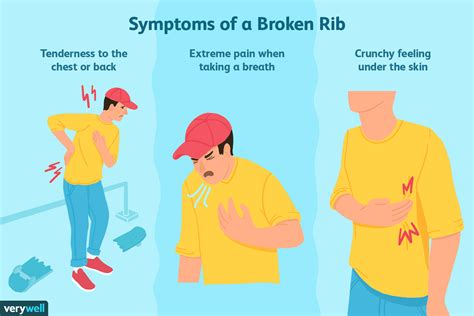
Bruised ribs are typically characterized by pain and swelling in the chest area. The pain may be dull and aching or sharp and stabbing, depending on the severity of the injury. In some cases, the pain may radiate to the back or abdomen. Other symptoms of bruised ribs include difficulty breathing, coughing, and fatigue. If you are experiencing any of these symptoms, it is essential to seek medical attention to rule out any underlying conditions that may be causing the symptoms.
Treatment Options for Bruised Ribs
The treatment for bruised ribs typically involves managing the symptoms and allowing the body to heal naturally. This may include taking over-the-counter pain medications, such as acetaminophen or ibuprofen, to manage pain and inflammation. Applying ice to the affected area can also help reduce pain and swelling. In some cases, the doctor may prescribe physical therapy to help improve mobility and reduce pain.Broken Ribs Symptoms
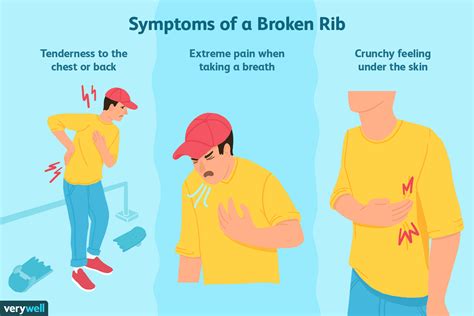
Broken ribs, also known as fractured ribs, are a more severe injury than bruised ribs. The symptoms of broken ribs can be quite severe and may include severe chest pain, difficulty breathing, and coughing up blood. In some cases, the person may experience shortness of breath, rapid heartbeat, or low blood pressure. If you are experiencing any of these symptoms, it is essential to seek medical attention immediately.
Treatment Options for Broken Ribs
The treatment for broken ribs typically involves immobilizing the affected area to allow the bones to heal. This may involve wearing a chest splint or using a chest binder to compress the chest and reduce movement. In some cases, the doctor may prescribe pain medications to manage pain and inflammation. Applying ice to the affected area can also help reduce pain and swelling. In severe cases, surgery may be necessary to repair the broken ribs and stabilize the chest wall.Causes of Bruised or Broken Ribs
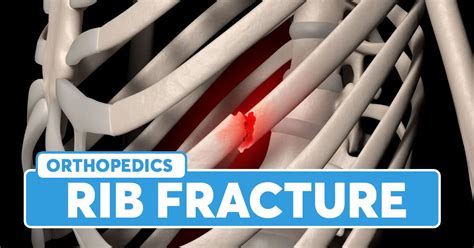
Bruised or broken ribs can be caused by various factors, including falls, car accidents, sports injuries, and physical altercations. In some cases, the injury may be caused by a medical condition, such as osteoporosis, which can weaken the bones and make them more susceptible to fractures. Other causes of bruised or broken ribs include severe coughing, sneezing, or vomiting, which can put pressure on the chest wall and cause the ribs to fracture.
Risk Factors for Bruised or Broken Ribs
Certain individuals are at a higher risk of developing bruised or broken ribs, including older adults, people with osteoporosis, and those who engage in contact sports. Additionally, people who have a history of falls or injuries are at a higher risk of developing bruised or broken ribs. If you are at risk, it is essential to take preventive measures, such as wearing protective gear, to reduce the risk of injury.Diagnosis of Bruised or Broken Ribs
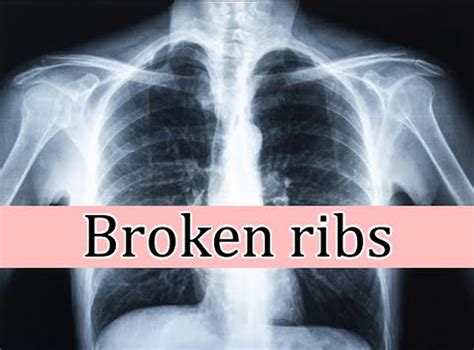
The diagnosis of bruised or broken ribs typically involves a physical examination and imaging tests, such as X-rays or CT scans. The doctor will examine the chest area to look for signs of injury, such as swelling, bruising, or tenderness. Imaging tests can help confirm the diagnosis and determine the severity of the injury.
Imaging Tests for Bruised or Broken Ribs
Imaging tests, such as X-rays or CT scans, can help diagnose bruised or broken ribs. X-rays are typically used to diagnose fractures, while CT scans can provide more detailed images of the chest area. In some cases, the doctor may order an MRI or ultrasound to evaluate the surrounding tissues and organs.Treatment and Recovery
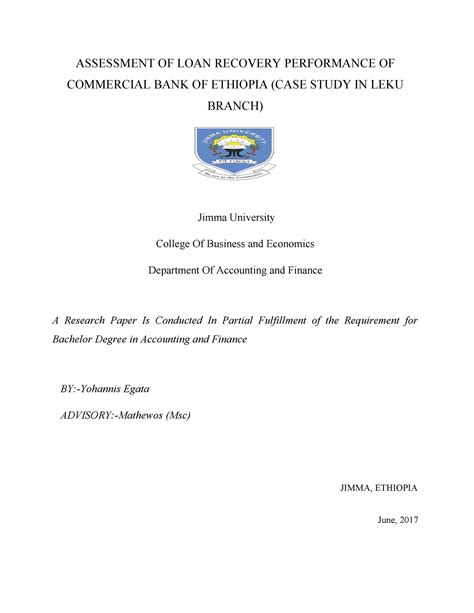
The treatment and recovery for bruised or broken ribs typically involve managing the symptoms and allowing the body to heal naturally. This may include taking over-the-counter pain medications, applying ice to the affected area, and getting plenty of rest. In some cases, the doctor may prescribe physical therapy to help improve mobility and reduce pain.
Recovery Time for Bruised or Broken Ribs
The recovery time for bruised or broken ribs can vary depending on the severity of the injury. In general, bruised ribs can take several weeks to heal, while broken ribs can take several months to heal. It is essential to follow the doctor's instructions and attend follow-up appointments to ensure proper healing and prevent complications.Complications of Bruised or Broken Ribs
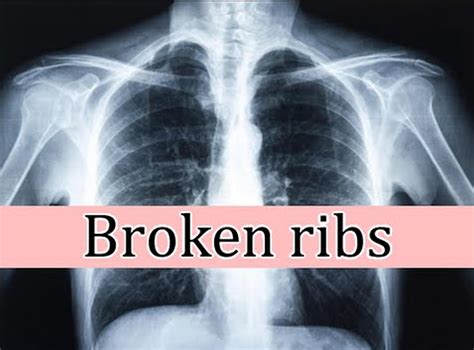
Bruised or broken ribs can lead to several complications, including pneumonia, lung collapse, and internal bleeding. In severe cases, the injury can lead to death. It is essential to seek medical attention promptly if you suspect that you or someone else has bruised or broken ribs.
Preventing Complications
To prevent complications, it is essential to seek medical attention promptly and follow the doctor's instructions. This may include taking medications as directed, applying ice to the affected area, and getting plenty of rest. Additionally, it is essential to attend follow-up appointments to ensure proper healing and prevent complications.Conclusion and Next Steps

In conclusion, bruised or broken ribs are common injuries that can occur due to various reasons. It is essential to recognize the symptoms and seek medical attention promptly to prevent complications. The treatment and recovery for bruised or broken ribs typically involve managing the symptoms and allowing the body to heal naturally.
If you are experiencing symptoms of bruised or broken ribs, it is essential to seek medical attention promptly. Your doctor can diagnose the injury and provide treatment options to manage the symptoms and prevent complications. Additionally, it is essential to follow the doctor's instructions and attend follow-up appointments to ensure proper healing and prevent complications.
We encourage you to share your experiences and ask questions in the comments section below. Your feedback is valuable to us, and we will do our best to respond to your comments and provide further guidance.
What are the symptoms of bruised ribs?
+The symptoms of bruised ribs include pain and swelling in the chest area, difficulty breathing, coughing, and fatigue.
How long does it take for bruised ribs to heal?
+Bruised ribs can take several weeks to heal, depending on the severity of the injury.
What are the complications of broken ribs?
+The complications of broken ribs include pneumonia, lung collapse, and internal bleeding. In severe cases, the injury can lead to death.
How can I prevent complications from bruised or broken ribs?
+To prevent complications, it is essential to seek medical attention promptly and follow the doctor's instructions. This may include taking medications as directed, applying ice to the affected area, and getting plenty of rest.
What is the treatment for bruised or broken ribs?
+The treatment for bruised or broken ribs typically involves managing the symptoms and allowing the body to heal naturally. This may include taking over-the-counter pain medications, applying ice to the affected area, and getting plenty of rest.
